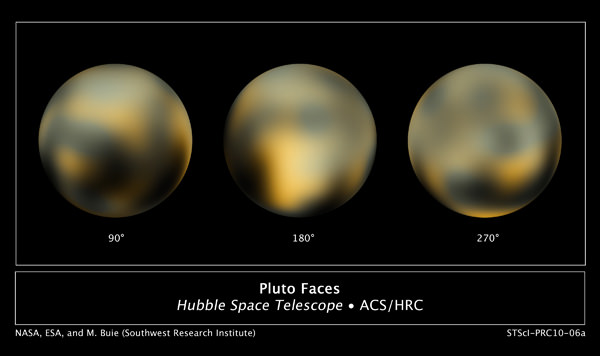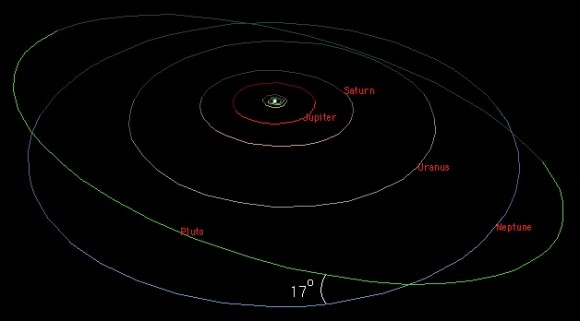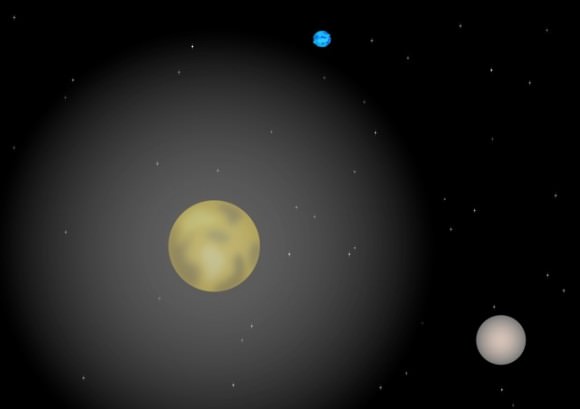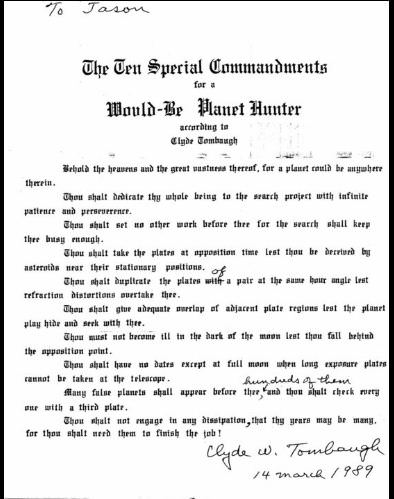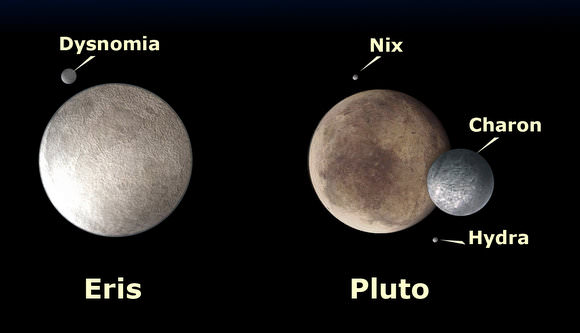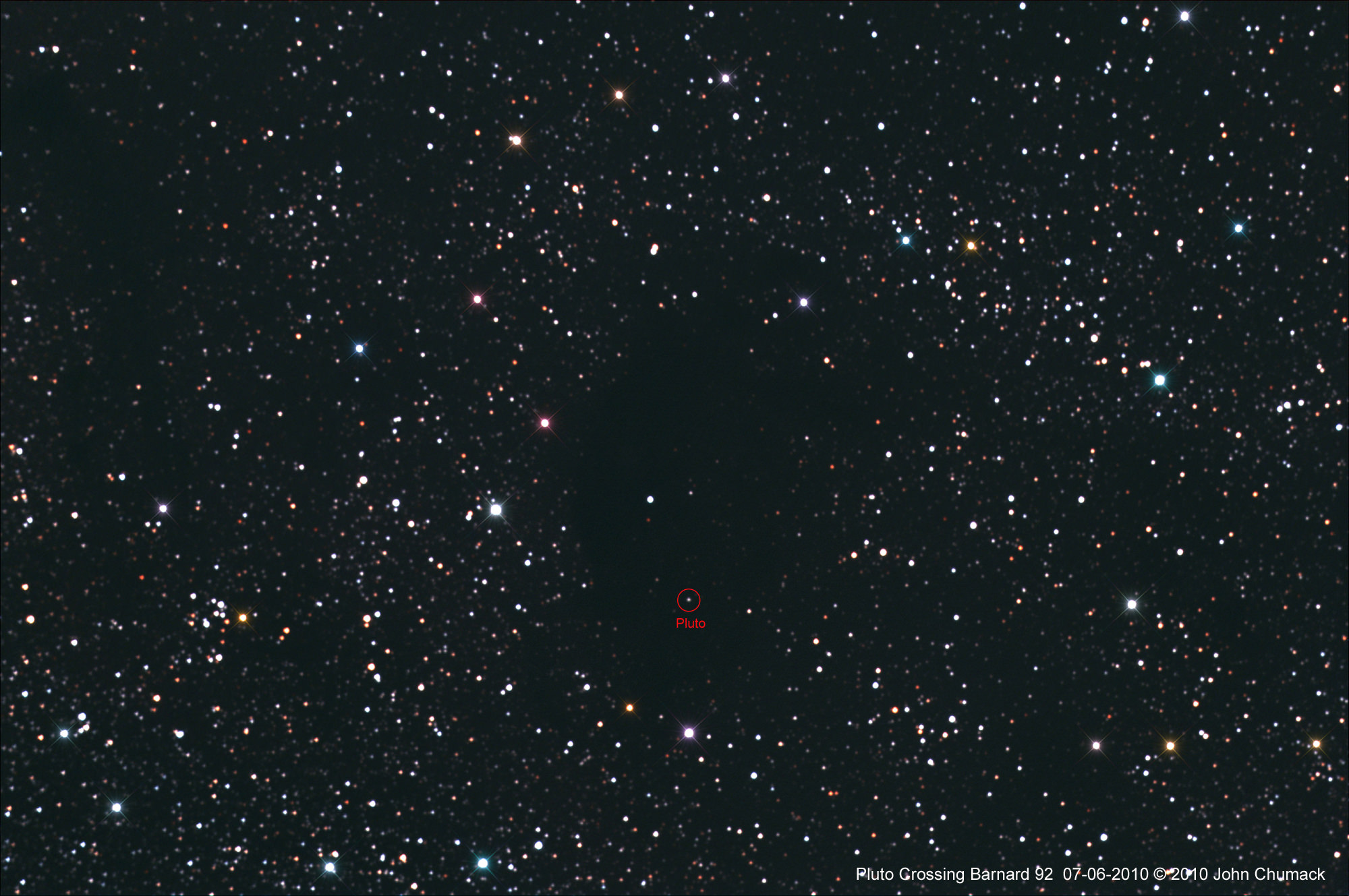Several teams of astronomers are taking advantage of a rare double event this week to learn more about the atmosphere and makeup of Pluto and its moons. The dwarf planet will occult, or pass in front of two different stars this week. One of the best viewing sites for these two events is in Hawaii, and eclipse-chaser Dr. Jay Pasachoff is there to record both events. “To see those occultations, we have to be in a particular set of places on Earth, those over which the shadow of the object in starlight passes,” Pasachoff wrote in a guest post on the Planet Hunters blog. “Since the stars are so far away, their light is essentially parallel and the shadows of the objects on Earth are the same as the sizes of the objects.”
If all goes well, we will know a lot more about the Pluto system, Pasachoff said.
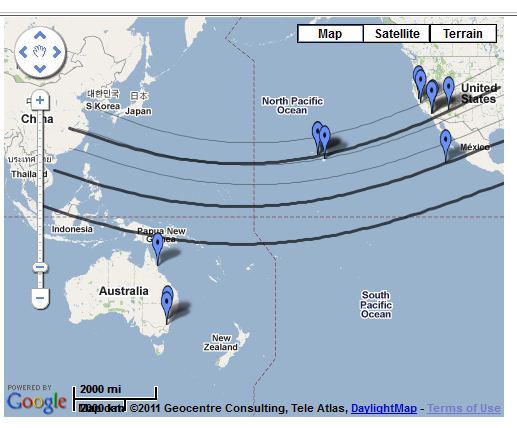
Last night, June 22/23, both Pluto and its moon Charon occulted a magnitude 14.4 star, with each occultation lasting a minute or so and separated from each other by 12 minutes. “The event is particularly exciting because if we capture both Pluto and Charon nearly simultaneously, we can find out about the system’s internal orbits with higher precision than before, perhaps allowing a refinement of the center of mass and thus the masses and densities of each object,” Pasachoff said.
Also, the first deployment for an occultation of the NASA/German SOFIA observatory took place last night to view the Pluto occultation, flying at an altitude of 43,000 feet off the west coast of Central America.
“The scientific goal is to catch the ‘central flash,’ which conveys vital information about conditions in Pluto’s global atmosphere,” wrote American Astronomical Society press officer Rick Fienberg on Twitter. Fienberg was part of the press corps that was accompanying the flight.
On Sunday/Monday night, June 26/27, Pluto will occult a different star, and over a much narrower path, its small moon Hydra might also occult another star.
Pasachoff said that the most recent predictions for last night’s occulations shifted the prediction south, so that Hawaii is slightly off the main predicted path, to its north. But other teams are in Cairns, Australia, to see if it goes that far south.
For the June 26/27 event (June 27 UT but June 26 in Hawaii), the star is magnitude 13.6. “That is a couple of magnitudes brighter than most of the stars we have observed being occulted,” Pasachoff said, “so the data would be particularly low-noise. In addition to the occultation of Pluto itself, whose southern limit is predicted to pass through the Hawaiian islands, the tiny Pluto moon Hydra is to be occulted, though that narrow path’s prediction now passes north of the Hawaiian islands. We have arranged for telescopes in Yunnan, China, in Japan, Taiwan, and Thailand to observe with us, and MIT’s Matt Lockhart is en route to Yunnan with one of our POETS (Portable Occultation, Eclipse, and Transit System) cameras. We have Australian sites still observing as well, just in case the actual path is hundreds of kilometers south of the predictions.”
Earlier occultations by Pluto studied by Pasachoff and his colleagues showed that Pluto’s atmosphere was warming and that the atmosphere would probably remain warm enough by 2015 for the New Horizons spacecraft to detect and study it with its on-board instruments, and was part of the incentive for the mission to launch when it did.
To learn more about the occultations and the research, check out this main stellar occultation website from Williams College, where Pasachoff is located, which has links to the work of other researchers as well.
Maps and details of the predictions can be found here, and more details about Pluto occultations websites can be found here.
We’ll try to provide an update of the events when details become available.
You can follow Universe Today senior editor Nancy Atkinson on Twitter: @Nancy_A. Follow Universe Today for the latest space and astronomy news on Twitter @universetoday and on Facebook.

